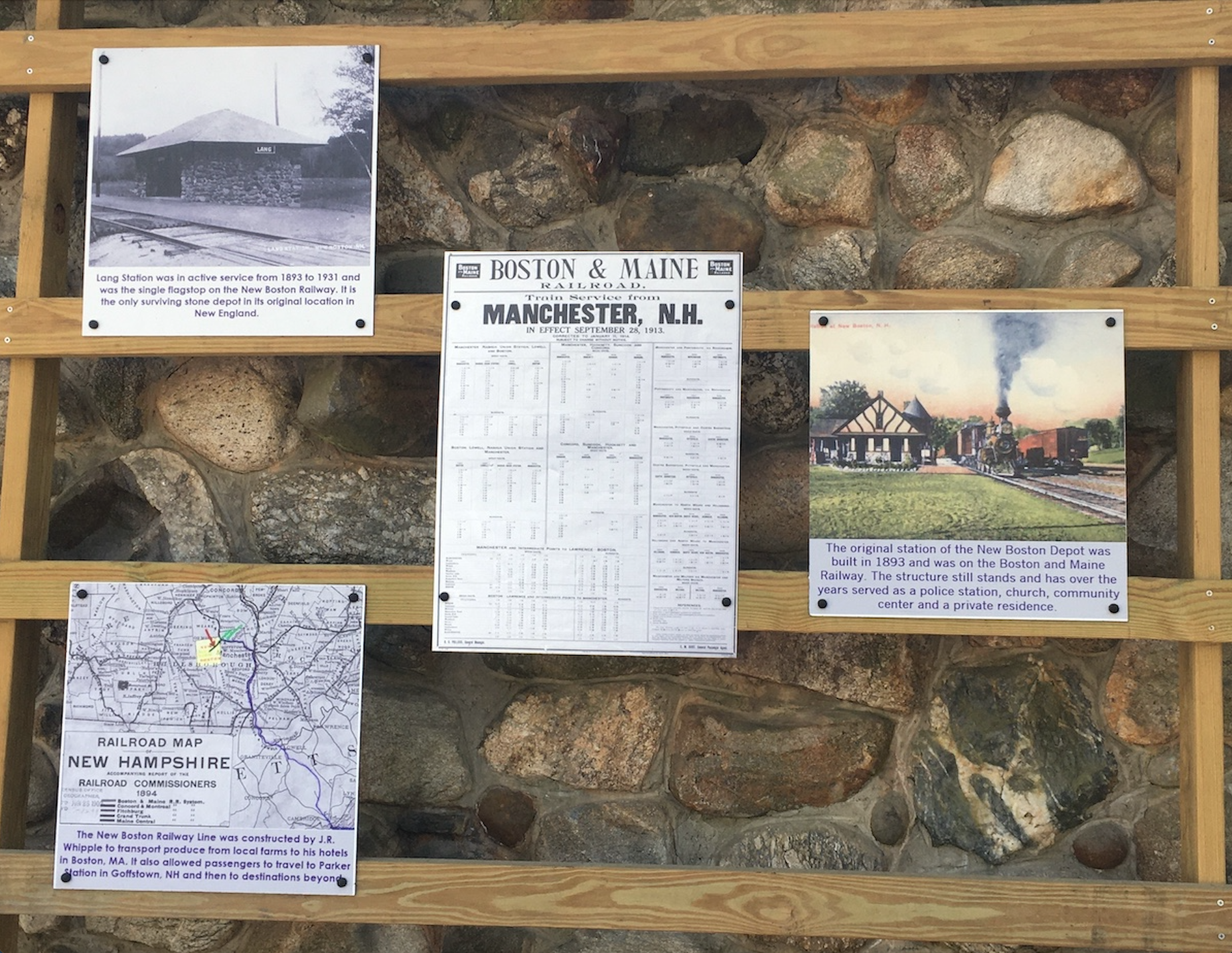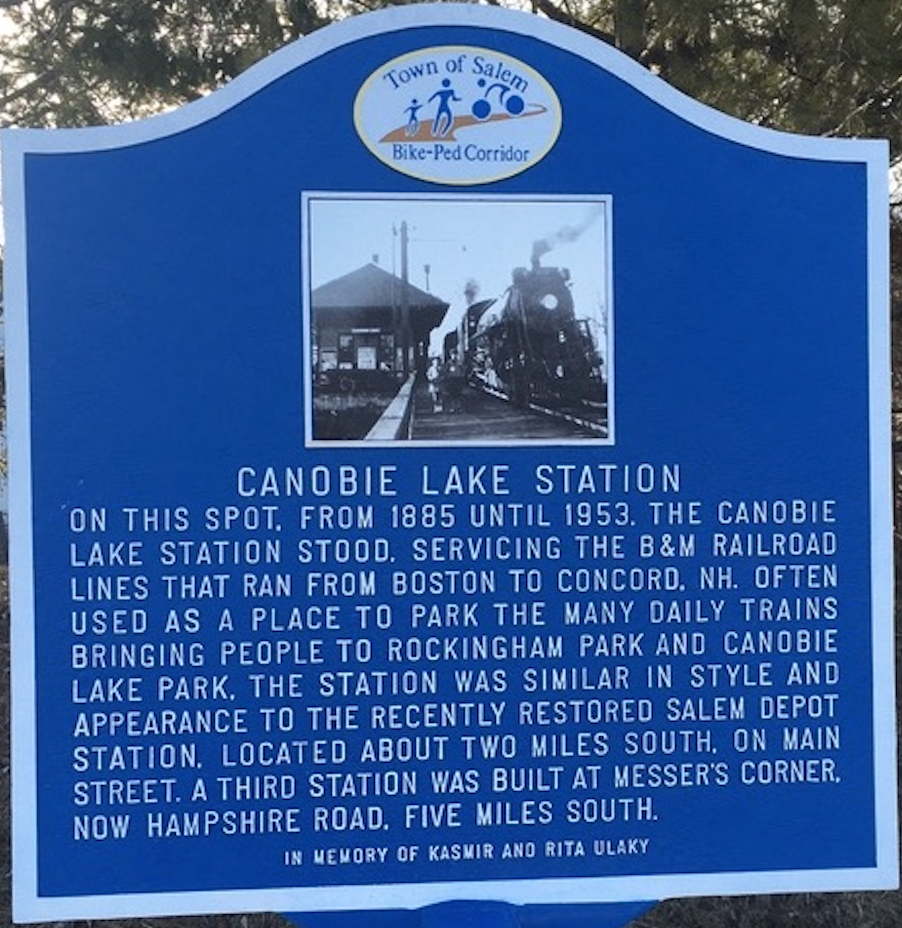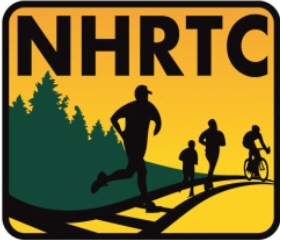
Photo: Old train schedule information on New Boston trail at Lang Station
You’ll be well rewarded as you travel along New Hampshire’s rail trails if you keep your eyes open for reminders of Granite State history and heritage. You’ll find informative markers, plaques, and signs celebrating people and events. Among the newest is the Black Heritage Trail marker honoring William Hobdy, mounted on the Derry Rail Trail just south of Broadway (NH Route 102).

At the dedication of Black Heritage Trail’s marker for William Hobdy: Nora Lewis, Barbara Ward, Keeva Davis, Delores Davis
The dedication of the Hobdy marker was a community-wide event drawing a crowd to central Derry. William Hobdy lived in Derry in the early 20th century and became owner of a small business. His music brought him his greatest renown, as his ragtime piano skills graced local venues. Now, the marker relating his story is a prominent feature on the Derry Rail Trail in the town center.
While on the Derry trail, keep an eye out for artwork framing a poem by Robert Frost, who once taught at nearby Pinkerton Academy before earning worldwide fame for his poetry.
Another Black Heritage Trail marker is at Potter Place in Andover, where a restored depot is a scenic highlight along the popular Northern Rail Trail. Andover resident Richard Potter was a 19th-century entertainer who gained nationwide fame as a ventriloquist, magician, and humorist, but his story didn’t end there. The marker honoring Potter can inspire you to learn more about him and his time.
Thanks to the enthusiasm of rail trail fans in conjunction with local historical societies, some trails celebrate a heritage of passenger rail to popular parks and bygone resorts. Kiosks in the towns of Troy and New Boston display reproductions of train schedules from the days when Boston residents would come to New Hampshire via train for vacations and day trips. In Salem on the Bike-Ped trail, a marker recalls train service to Canobie Lake and Rockingham Park.

Salem trail information about trains to Canobie Lake
Sometimes, a sign will spotlight a feature of the trail itself. Watch for an informational sign along the Sugar River Trail in Newport about the unusual Pier covered bridge, built tall enough to accommodate the trains that used to ply the route. Motorists on nearby roads can’t see the bridge, but trail users get to travel right through it.
These clues to local history add something special to an excursion on rail trails. Every trip can reveal something new.
Text and photos by NHRTC Treasurer, Ellen Kolb. Check out her blog: http://granitestatewalker.com/
